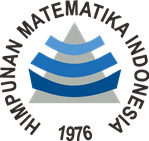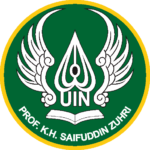An Analysis of Students’ Mathematical Problem-Solving Ability in Relation to Their Mathematical Anxiety: A Study of Grade VII Students at SMP Muhammadiyah Sokaraja
DOI:
https://doi.org/10.24090/ijrme.v3i1.13454Keywords:
Mathematical problem-solving ability, Anxiety, Math anxietyAbstract
This study aimed to analyze the mathematical problem-solving abilities of seventh-grade students at SMP Muhammadiyah Sokaraja in relation to the mathematical anxiety they experienced. This research was conducted as qualitative field research, with data collected at SMP Muhammadiyah Sokaraja. The subjects of the study were students from Class VII B. Data were obtained through observation, interviews, and problem-solving tests. The tests were administered to assess students' mathematical problem-solving abilities, which were then categorized into three levels: low, moderate, and high. Students were subsequently observed and interviewed regarding their experiences of mathematical anxiety. These observations and interviews were conducted over three meetings. The findings revealed that students with low problem-solving abilities tended to experience mathematical anxiety in the form of difficulty speaking or trembling voices, dependence on peers, frequent help-seeking, dislike of mathematics, and heart palpitations. Students in the moderate category exhibited anxiety such as dizziness, heart palpitations, and fear of failure. Meanwhile, students in the high category of mathematical problem-solving ability tended to experience anxiety only in the form of worry or fear of failure.References
Diana, P., Marethi, I., & Pamungkas, A. S. (2020). Kemampuan Pemahaman Konsep Matematis Siswa: Ditinjau dari Kategori Kecemasan Matematik. SJME (Supremum Journal of Mathematics Education), 4(1), 24–32. https://doi.org/10.35706/sjme.v4i1.2033
Haryoko, S., Bahartiar, & Arwadi, F. (2020). Analisis Data Penelitian Kualitatif (Konsep,Teknik, & Prosedur Analisis). Badan Penerbit UNM.
Himmi, Z. (2022). Analisis Kecemasan Matematis Siswa Dalam Pembelajaran Matematika SMA Negeri 1 Seulimeum.
Kameubun, B., Mahendra, F. E., Supriadi, & Al-Lahmadi, N. (2023). Pengaruh Tingkat Kecemasan Siswa Terhadap Kemampuan Pemecahan Masalah Matematis. Journal of Mathematics Education, 1(1), 40–49.
Mukholil. (2018). Kecemasan dalam Proses Belajar. Eksponen, 8(1), 1–8.
Novitasari, & Wilujeng, H. (2018). Analisis Kemampuan Pemecahan Masalah Matematika Siswa Smp Negeri 10 Tangerang. Prima: Jurnal Pendidikan Matematika, 2(2), 137–147. https://doi.org/10.31000/prima.v2i2.461
Pratiwi, N. I. (2017). Penggunaan Media Video Call dalam Teknologi Komunikasi. Jurnal Ilmiah DInamika Sosial, 1(2), 202–224.
Pristiwanti, D., Badariah, B., Hidayat, S., & Dewi, R. S. (2022). Pengertian Pedidikan. Jurnal Pendidikan Dan Konseling, 4(6), 7911–7915. https://doi.org/10.33387/bioedu.v6i2.7305
Purba, D., Zulfadli, & Lubis, R. (2021). Pemikiran George Polya tentang Pemecahan Masalah. Mathematic Education Journal, 4(1), 25–31. http://journal.ipts.ac.id/index.php/
Rizki, F., Rafianti, I., & Marethi, I. (2019). Pengaruh Kecemasan Matematika terhadap Kemampuan Pemecahan Masalah Siswa di SMA. GAUSS: Jurnal Pendidikan Matematika, 2(2), 11–23. https://doi.org/10.30656/gauss.v2i2.1750
Santri, F. S. (2017). Ada Apa Dengan Kecemasan Matematika? Journal of Medives , 1(1), 59–65. http://e-journal.ikip-veteran.ac.id/index.php/matematika
Setiawan, M., Pujiastuti, E., & Susilo, B. E. (2021). Tinjauan Pustaka Sistematik: Pengaruh Kecemasan Matematika Terhadap Kemampuan Pemecahan Masalah Siswa. Qalamuna: Jurnal Pendidikan, Sosial, Dan Agama, 13(2), 239–256. https://doi.org/10.37680/qalamuna.v13i2.870
Solehah, H., & Setiawan, D. (2023). Kurikulum Merdeka dan Penilaian Pembelajaran Matematika dalam Membangun Generasi Matematika yang Kompeten ( Studi Literatur ). Jurnal Pendidikan Tambusai, 7(3), 23929–23940.
Sugiyamti. (2018). Peningkatan Hasil Belajar Membuat Skets Grafik Fungsi Aljabar Sederhana pada Sistem Koordinat Kartesius Melalui Metode Cooperatif Learning Jigsaw pada Siswa Kelas Viii F SMP Negeri 6 Sukoharjo Semester I Tahun Pelajaran 2017/2018. Jurnal Ilmiah Edunomika, 2(01), 175–186. https://doi.org/10.29040/jie.v2i01.195
Suherni, Hakim, F., Nurlaila, & Lisalam, R. H. (2024). Tenang dalam Perspektif Hadis. Jurnal Penelitian Dan Karya Ilmiah, 2(4), 71–89. http://dx.doi.org/10.31219/osf.io/y5d2k
Sulistianingsih, Nurzakiah, H., Amelia, F., & Permana, H. (2024). Analisis Faktor Penyebab Siswa Tidak Menikmati Mata Pelajaran Tertentu di SMP Negeri 1 Sumber Kabupaten Cirebon. Jurnal Literasi Indonesia, 1(1), 37–41.
Ulfah, & Opan Arifudin. (2021). Pengaruh Aspek Kognitif, Afektif, Dan Psikomotor Terhadap Hasil Belajar Peserta Didik. Jurnal Al-Amar (JAA), 2(1), 1–9.
Waruwu, M. (2023). Pendekatan Penelitian Pendidikan: Metode Penelitian Kualitatif, Metode Penelitian Kuantitatif dan Metode Penelitian Kombinasi (Mixed Method). Jurnal Pendidikan Tambusai , 7(1), 2896–2910.
Downloads
Published
How to Cite
Issue
Section
License
Copyright (c) 2025 Shela Oktifiani, Lily Rahmawati

This work is licensed under a Creative Commons Attribution-ShareAlike 4.0 International License.
Authors who publish with this journal agree to the following terms:
Authors retain copyright and grant the journal right of first publication with the work simultaneously licensed under a Creative CommonsAttribution-ShareAlike License that allows others to share the work with an acknowledgment of the work's authorship and initial publication in this journal.
Authors are able to enter into separate, additional contractual arrangements for the non-exclusive distribution of the journal's published version of the work (e.g., post it to an institutional repository or publish it in a book), with an acknowledgment of its initial publication in this journal.
Authors are permitted and encouraged to post their work online (e.g., in institutional repositories or on their website) prior to and during the submission process, as it can lead to productive exchanges, as well as earlier and greater citation of published work (See The Effect of Open Access).












